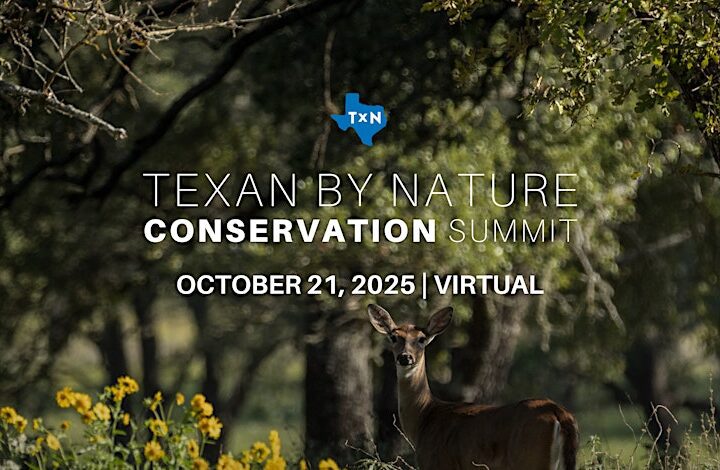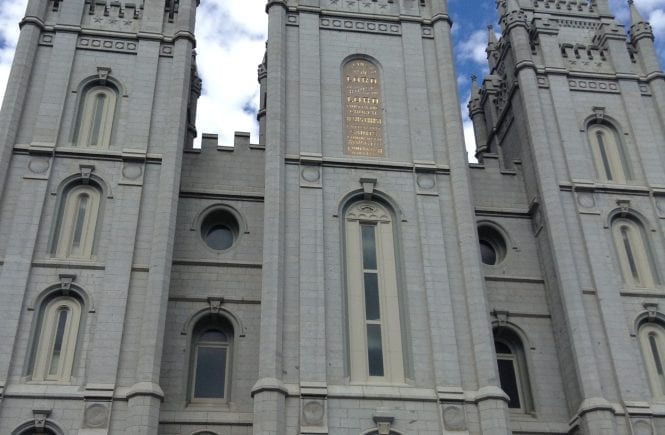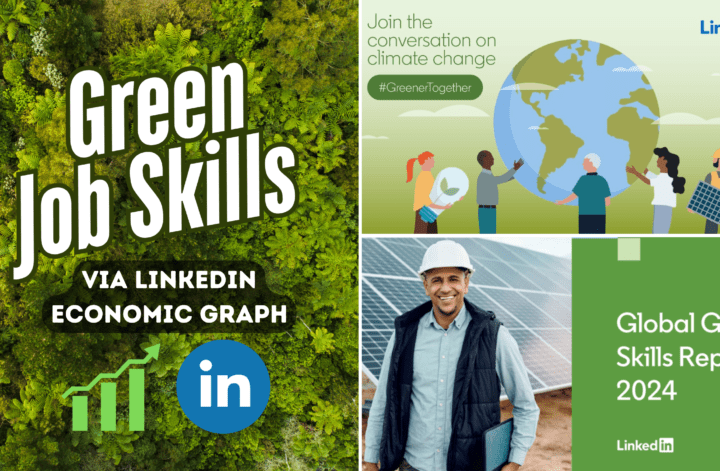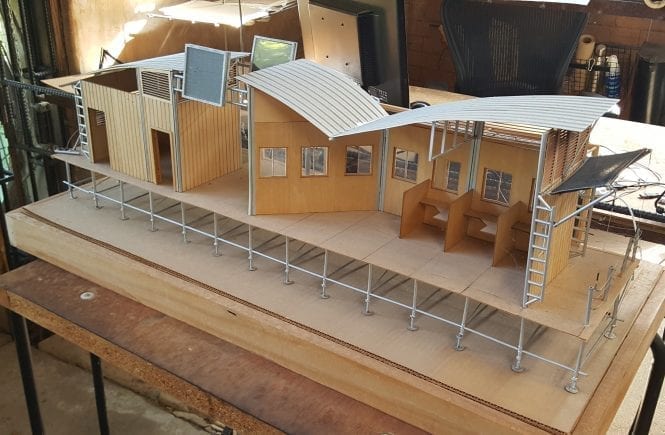This year, I had the pleasure of virtually attending the 2025 Texan by Nature Conservation Summit, an annual celebration of the state’s most innovative and impactful conservation work. Though I joined from my desk rather than in person, the experience was deeply meaningful – especially since I first learned about Texan by Nature years ago while working for the Texas Trees Foundation, where we attended this same event as a “conservation wrangler” nominee. Seeing how much the organization has grown since then was both nostalgic and inspiring.
Founded by former First Lady Laura Bush, Texan by Nature (TxN) continues to lead the way in uniting business, community, and conservation for measurable impact across the state. At the center of this effort is the Conservation Wrangler program, a one-of-a-kind accelerator that identifies, supports, and amplifies the most promising conservation initiatives in Texas.
Each year, up to six projects are selected to receive 12–18 months of tailored support – from strategic planning and marketing to data tracking, partnership building, and Return on Conservation™ analysis. The program’s goal is simple but profound: to strengthen conservation outcomes through collaborative partnerships and business-framed conservation ROI, delivering smart and tangible returns for Texas communities and ecosystems alike.
The 2025 Conservation Wranglers
The 2025 Conservation Wrangler class showcases the incredible diversity of Texas’ environmental landscape, from coastal restoration and wildlife protection to prairie rehydration and community-based education.
- Texas Master Naturalist Program – Statewide, Texas
Since 1997, the Texas Master Naturalist Program has trained over 17,400 volunteers who collectively contribute more than 7.5 million service hours across the state. Through education, outreach, and hands-on conservation service, these volunteers have stewarded more than 260,000 acres and engaged over seven million Texans in natural resource learning. Their impact, valued at over $170 million, is a testament to the power of community-driven stewardship. - International Crane Foundation – Texas Program – Aransas, Texas
Dedicated to protecting the endangered Whooping Crane, the International Crane Foundation’s Texas Program safeguards the species’ wintering grounds along the Gulf Coast. Through habitat management, freshwater preservation, research, and outreach, the foundation works to ensure that the Whooping Crane (once reduced to only 15 birds in the 1940s) continues to thrive in Texas’ coastal ecosystems. - Rolling Plains Quail Research Foundation – Rolling Plains Quail Research Ranch – Rotan, Texas
Operating on a 4,820-acre site in Fisher County, the Rolling Plains Quail Research Ranch focuses on preserving Texas’ wild quail populations through habitat management, disease monitoring, and applied research. The Foundation’s data-driven approach provides practical solutions for landowners and wildlife managers, helping sustain quail habitats and hunting traditions for future generations. - Harte Research Institute – Sink Your Shucks™ Oyster Shell Recycling Program – Corpus Christi, Texas
Led by Texas A&M University–Corpus Christi’s Harte Research Institute, Sink Your Shucks™ is the state’s first oyster shell recycling program. Since 2009, it has reclaimed discarded oyster shells from restaurants and returned them to Texas bays to rebuild reef habitats. This circular solution not only restores marine ecosystems but also engages local communities in hands-on conservation, turning restaurant waste into essential natural infrastructure. - Wildcat Bluff Nature Center – Landscape Rehydration & Bioregional Learning – Amarillo, Texas
In partnership with Ogallala Life Conservation Inc., Wildcat Bluff Nature Center is addressing water scarcity and land degradation in the Texas Panhandle. Through landscape rehydration techniques such as natural stream restoration, post-assisted log structures, and rainwater harvesting, the project is revitalizing dryland ecosystems while creating a living classroom for ecological learning and community engagement.
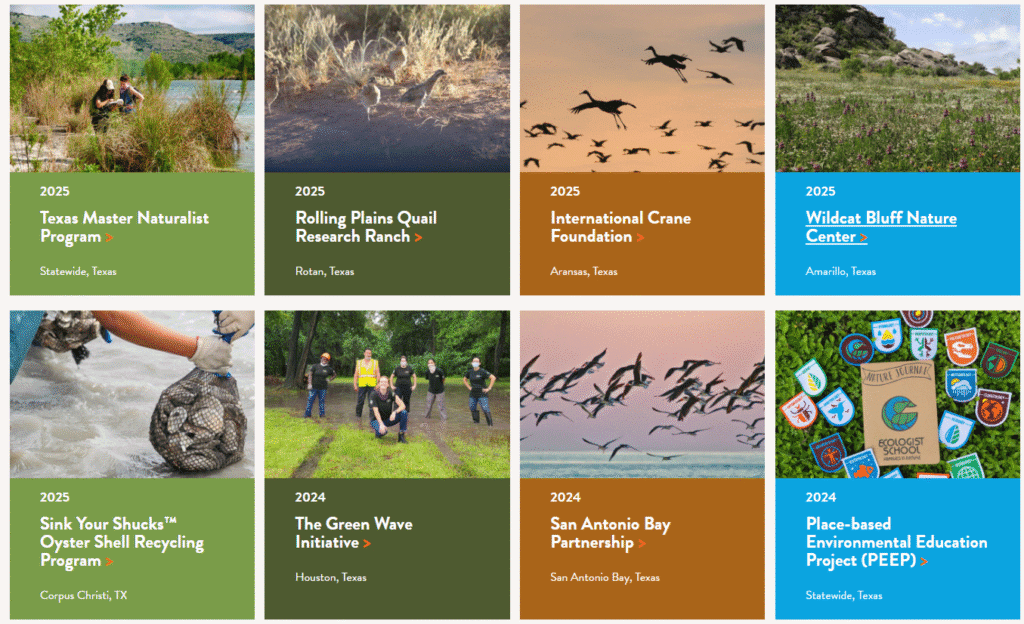
Key Takeaways from the 2025 Conservation Summit Discussions
Beyond celebrating the Wrangler projects, this year’s Summit featured three deep-dive discussions that brought together corporate leaders, conservation practitioners, and researchers to share frameworks and best practices for planning, implementing, and reporting on conservation initiatives.
Panel 1: Setting Goals, Evaluating, and Articulating Opportunities
Moderator: Robert Horton, DFW International Airport
Panelists: Audrey Templeton (Molson Coors), Urvy Dani (TxN & Texas Water Action Collaborative)
The opening discussion framed a universal truth: clear, measurable goals are the backbone of credible sustainability work.
- DFW Airport illustrated what operationalized conservation looks like – achieving carbon-neutral status in 2016, diverting 90% of construction waste, and saving airlines $40 million annually through gate-power efficiency. Their zero-waste and net-zero plans align environmental metrics with financial returns.
- Molson Coors showed how water stewardship can secure both supply chains and ecosystems. Its Fort Worth brewery has saved over 2 billion gallons in the Richland-Chambers watershed through “Water as a Crop” projects, proving watershed investment is business resilience.
- TxN’s Texas Water Action Collaborative (TxWAC) shared how it has directed $6 million toward verified water projects statewide, translating conservation outcomes into ROI using the Return on Conservation™ (ROC) framework aligned to the UN Sustainable Development Goals.
Takeaway: Success begins with setting time-bound, data-driven targets, aligning them with core business priorities, and measuring progress in both ecological and economic terms.
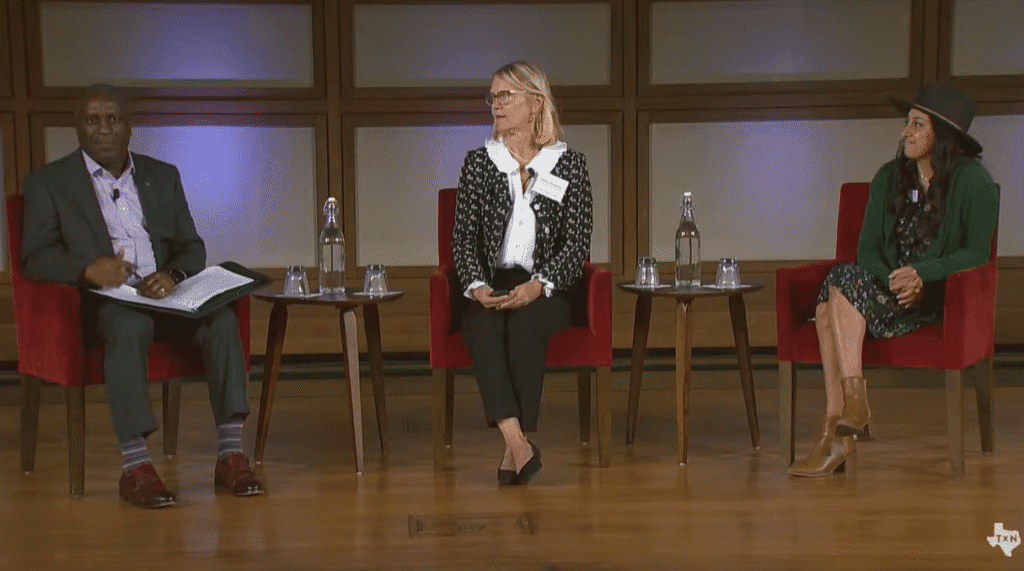
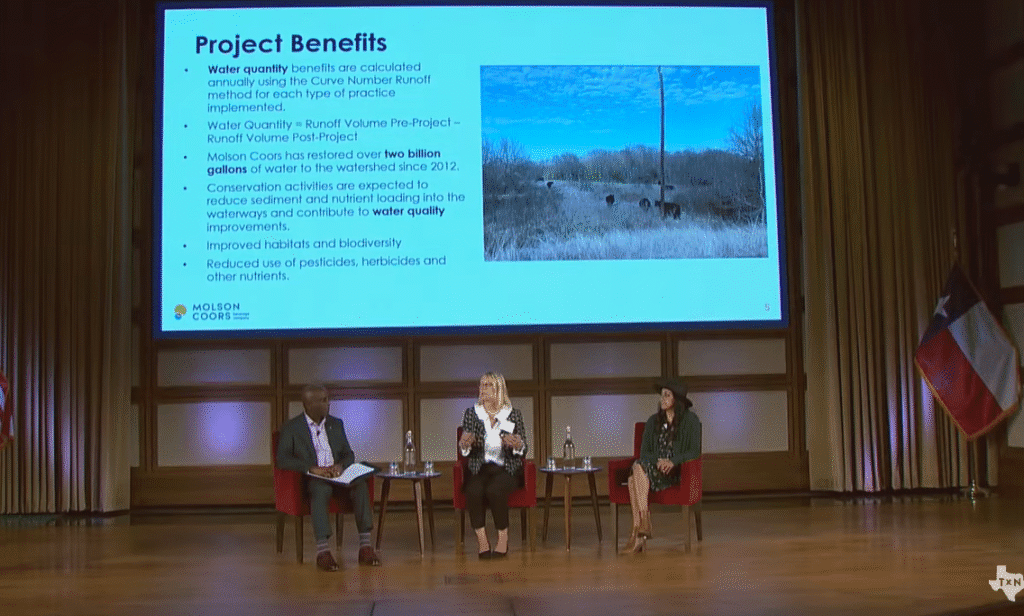
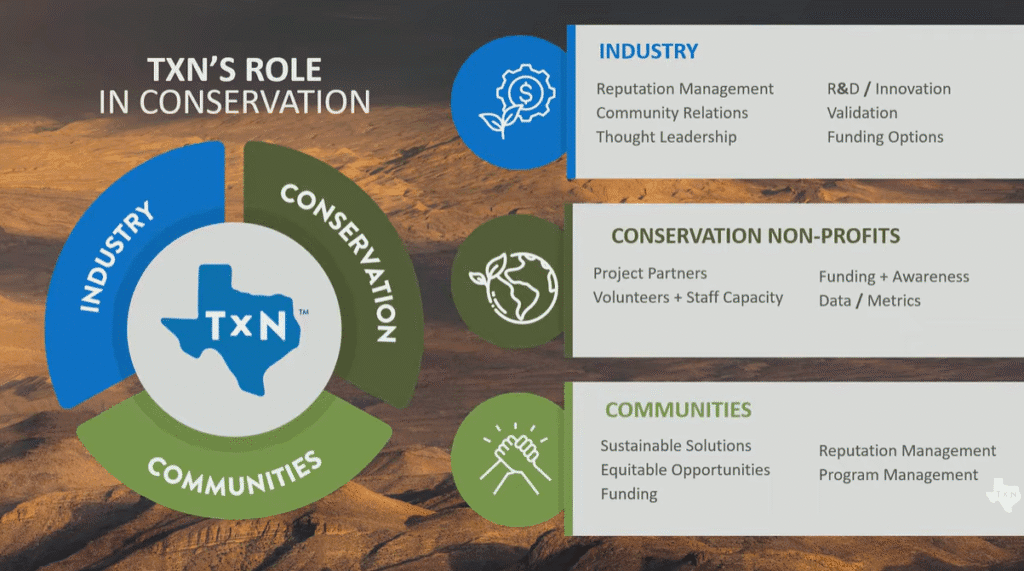
Panel 2: Implementing Programs & Evaluating Progress
Moderator: Taylor Keys (TxN)
Panelists: Travis Ethridge (Apache Corp), Billy Tarrant (Borderlands Research Institute), Sam Ebrite (Natural Channel Design Engineering)
As the first panel emphasized planning, this one celebrated persistence. Implementation, speakers agreed, is where partnerships and patience pay off.
- Rolling Plains Quail Research Ranch demonstrated adaptive management – turning a crisis in quail decline into discovery by identifying the eyeworm parasite and restoring grassland health through long-term monitoring.
- Apache Corporation’s Midland County reclamation pilot tested eight revegetation techniques on 25 retired well pads with BRI, prioritizing low-disturbance native plant restoration. Transparent data sharing aims to guide similar efforts across the oil and gas sector.
- Borderlands Research Institute highlighted landowner trust as the cornerstone of conservation in West Texas, showing that dialogue and flexibility can bridge divides between ranchers and resource managers.
- Natural Channel Design Engineering paired drone mapping with landowner input to target high-impact restoration sites across 500,000 acres, blending technology with local wisdom.
Their collective mantra: Plan, monitor, pivot. Success is measured not just in acres treated but in relationships built and data shared.
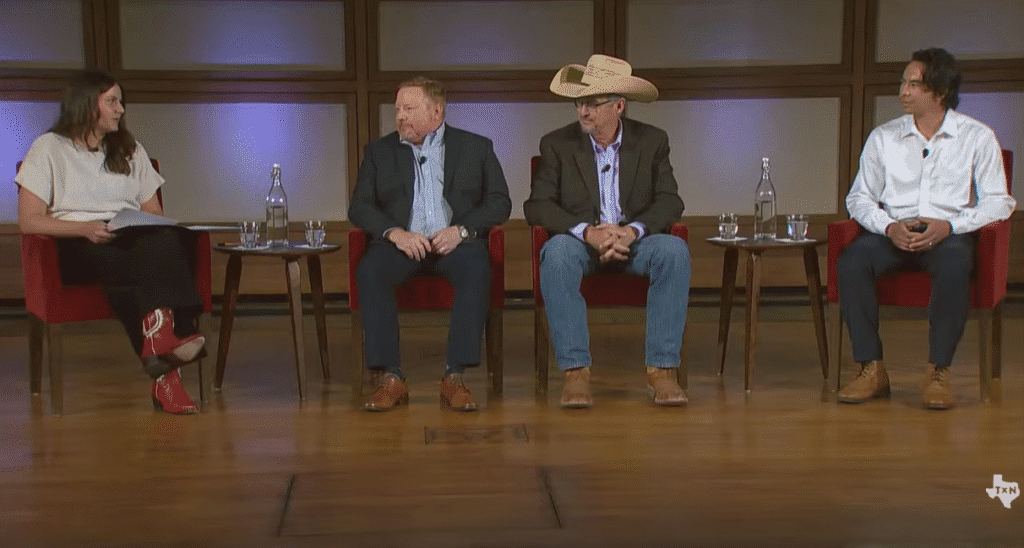
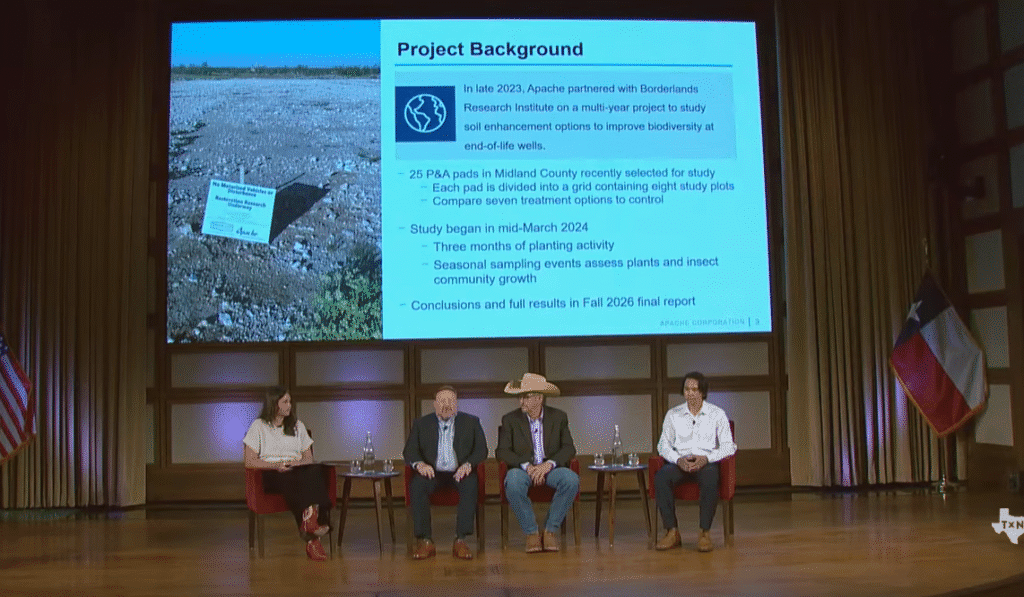
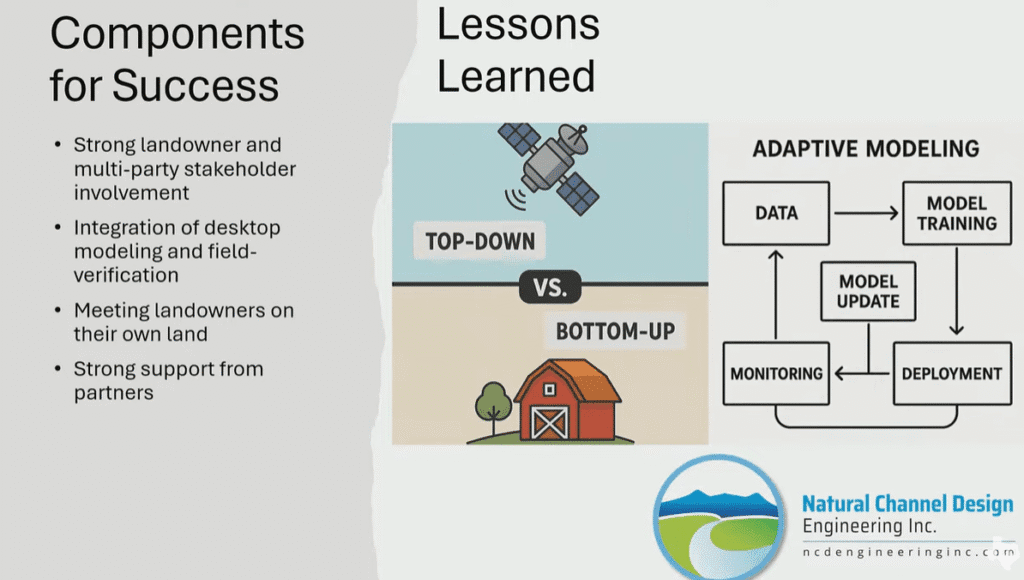
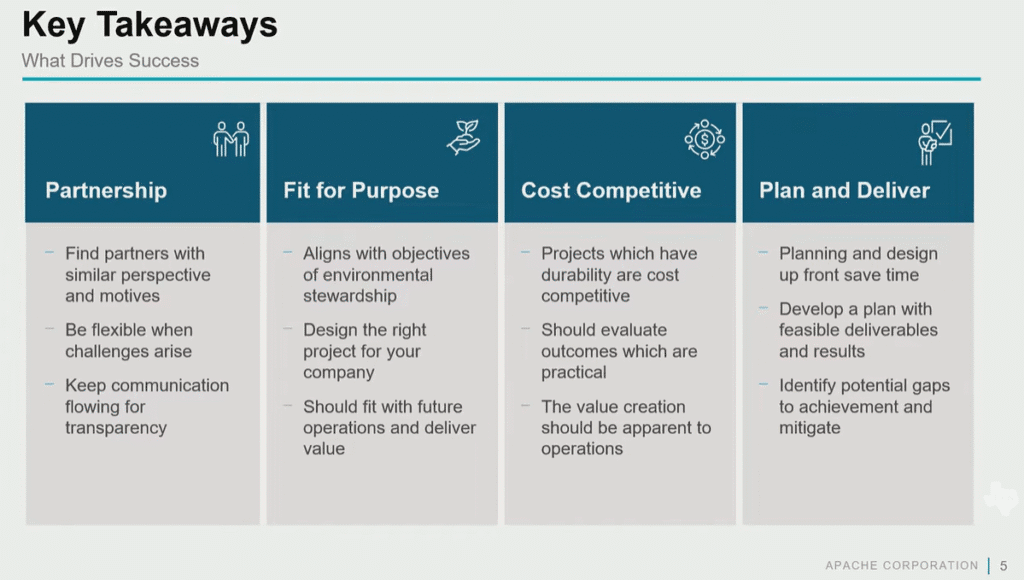
Panel 3: Reporting Results & Educating Stakeholders
Moderator: Joni Carswell (TxN)
Panelists: Ana Val (H-E-B), Karina Araujo (TxN), Ed Piñero (EcoMetrics)
The final discussion turned to transparency – how to prove and communicate impact so conservation moves from “feel-good” to operations-critical.
- H-E-B’s Trees for Texans program exemplifies strategic conservation: nearly 250,000 trees planted statewide across schools, communities, and reforestation sites, guided by heat-map data and expert partners. The live public dashboard on OurTexasFuture.com turns canopy growth into operational insight, showing how tree cover cools neighborhoods, supports pollinators, and builds community pride.
- Karina Araujo shared how TxN ensured every element of the partner project was rooted in data and aligned to business goals. GIS mapping targeted the hottest, most vulnerable neighborhoods, while clear communication kept the message accessible. The result: a replicable model of science-based storytelling that connects climate resilience with local identity.
- Ed Piñero closed by explaining how EcoMetrics assigns monetary value to the environmental and social benefits of conservation, stormwater retention, air quality, and community well-being to create the “Rosetta stone” between nature and the balance sheet. “You know your investment to the dollar,” he said. “We make sure you know the return to the dollar, too.”
Together, the panel underscored three essentials:
- Co-create metrics early. Define success in both ecological and business terms.
- Visualize results. Dashboards and story maps make data usable and inspiring.
- Translate value. Conservation is infrastructure and vital to risk management, workforce health, and long-term prosperity.
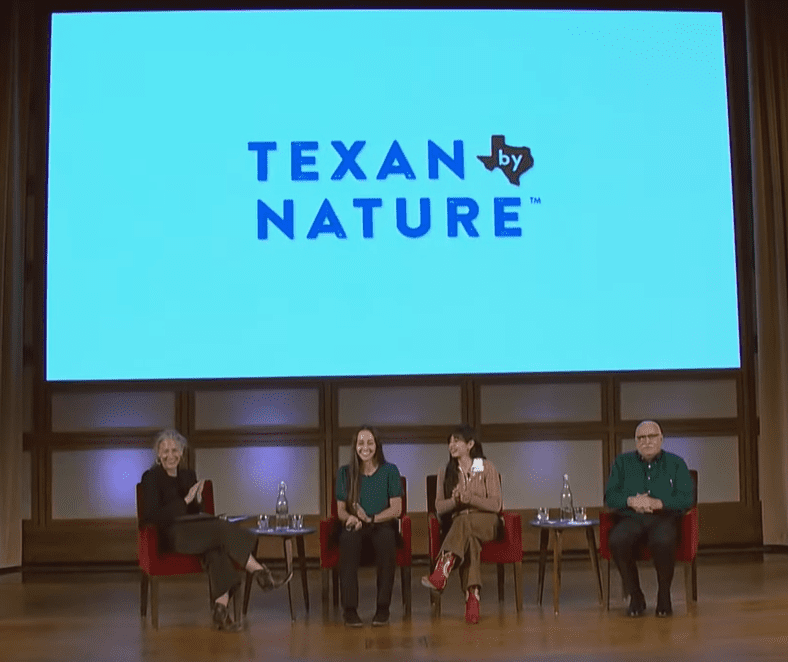
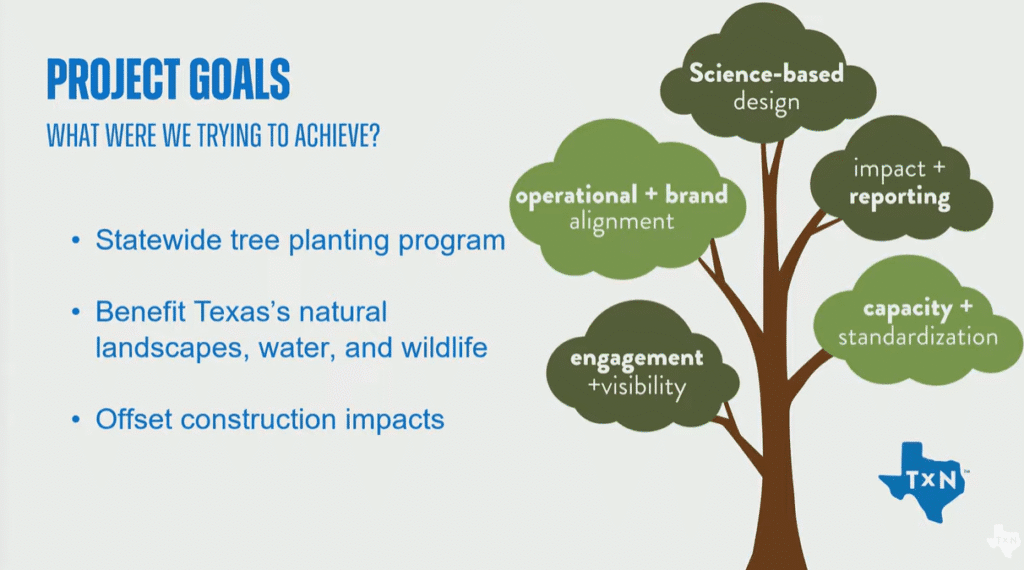
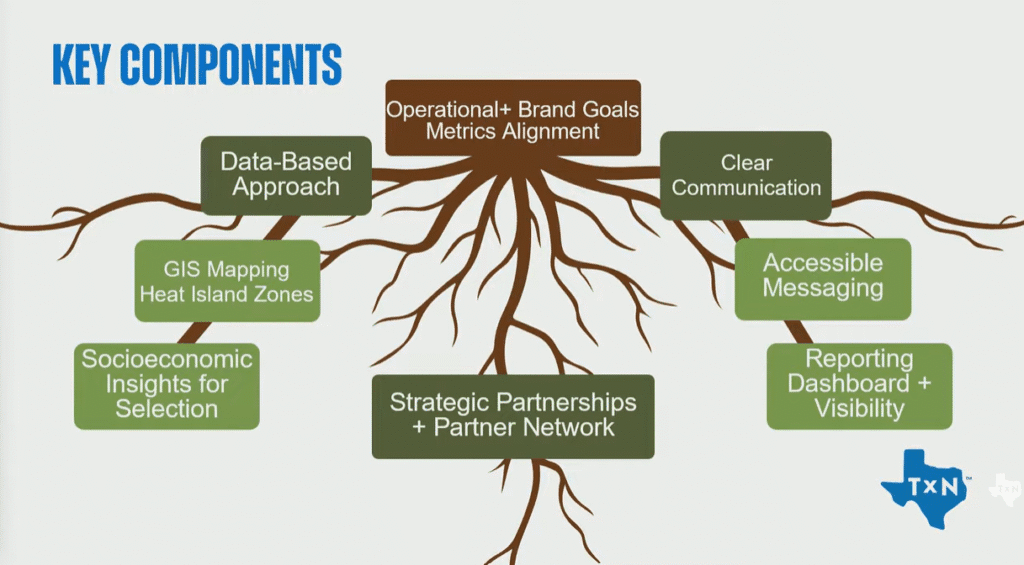
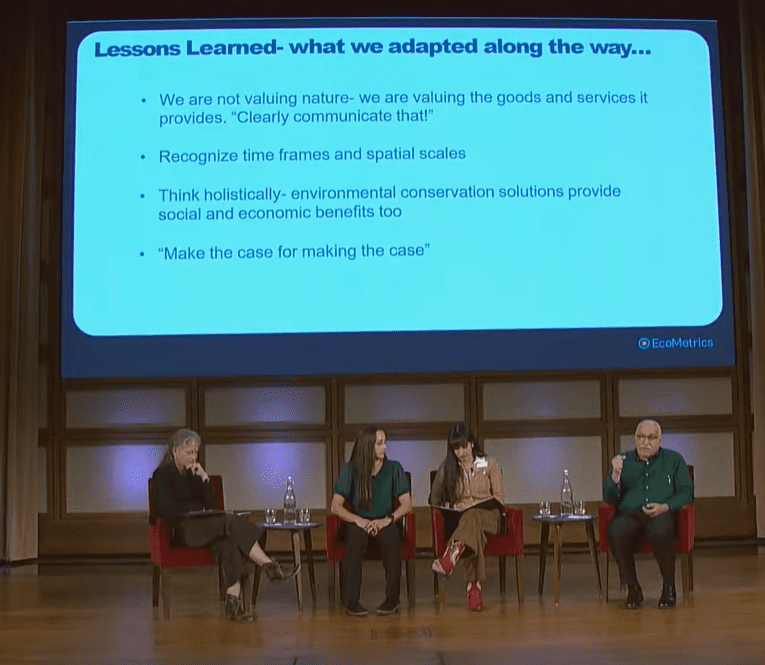
Reflections on Conservation and Communication
What stood out most throughout the Summit was how Texan by Nature continues to serve as a hub or partner bridge connecting data-driven science with community storytelling. Whether through the Conservation Wrangler program or through panels on goal-setting and impact reporting, the message was consistent: real conservation success depends on measurable outcomes, strategic partnerships, and clear communication.
As I listened to the panels, I was reminded of why I’ve always been drawn to sustainability and public engagement work. Conservation isn’t just about protecting land or wildlife, it’s about connecting people to purpose and showing how local action contributes to a statewide legacy.
Looking Ahead
The 2025 Summit also marked the opening of the 2026 Conservation Wrangler applications, due January 30, 2026. For any Texas-based organization looking to accelerate its conservation impact (whether focused on water, wildlife, land, or community) this program offers an unparalleled opportunity for mentorship, metrics support, and visibility.
Even virtually, the Summit reflected what I’ve always admired about Texan by Nature: a belief that conservation and business are not opposites, but partners in progress. From coastal bays to high plains, this year’s Wranglers and panelists exemplified how data, collaboration, and storytelling can drive lasting change.
To explore the 2025 Wrangler projects or learn more about applying for next year’s cohort, visit Texan by Nature’s Conservation Wrangler page.
*All image credits and attributions go to Texan By Nature via screenshots from their publicly available YouTube live stream.
*Content was generated with AI based on my notes and direction, then edited and refined by me for accuracy.

